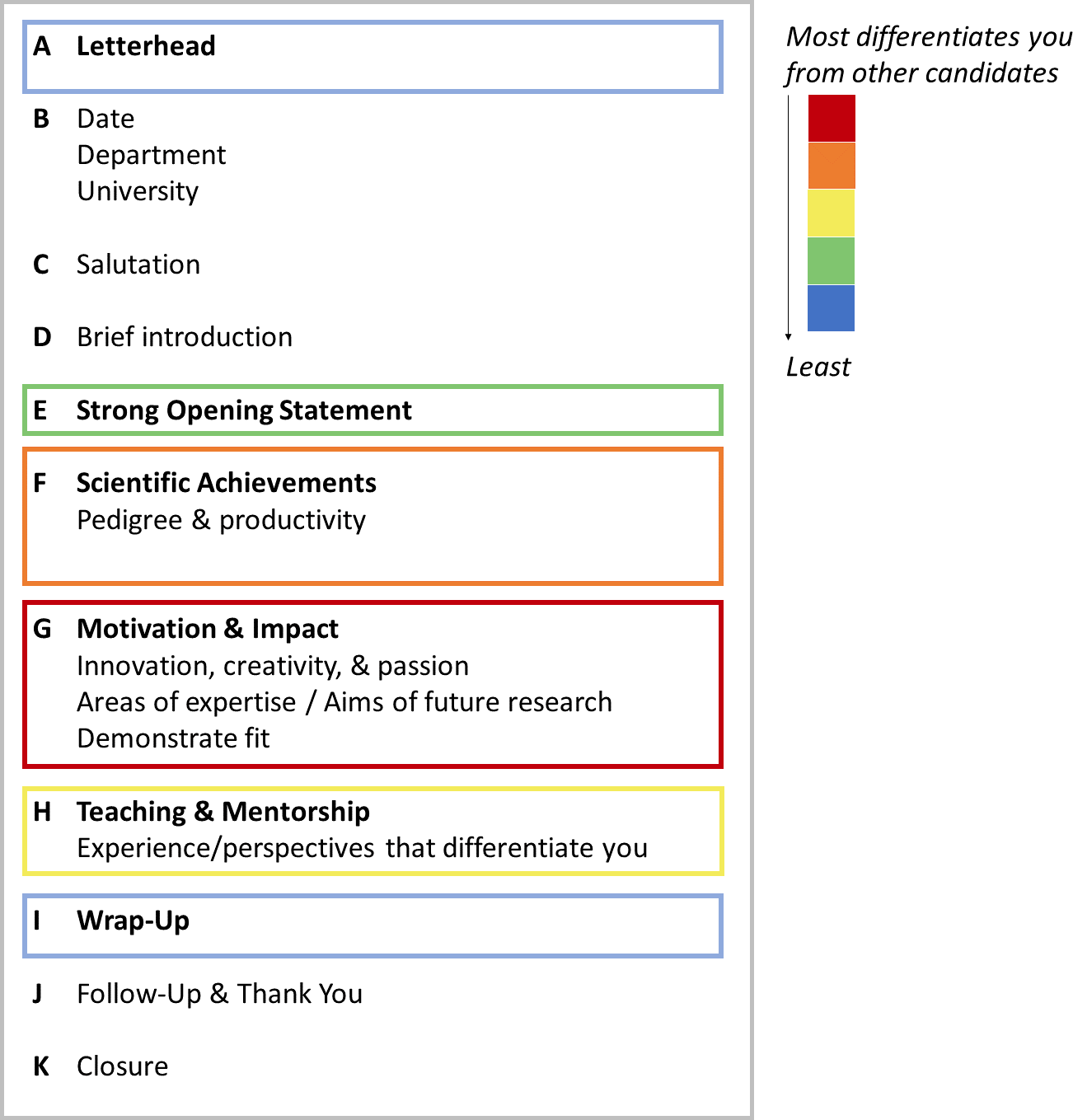Academic | Cover Letters
Cover Letters
Your cover letter should effectively relate why you are uniquely qualified for the position you are applying for and give concrete examples that show you fit the specific qualifications outlined in the job advertisement. It should NOT be your CV in a letter format. View the cover letter as an opportunity to showcase your writing abilities and to show enthusiasm for the position, department, and institution.
- Tailor your job letter to EACH position to which you are applying. Adjust the mix of emphasis on research versus teaching to fit the expectations outlined in the job advertisement. For guiding questions to help you tailor your letter, see the detailed PDF document.
- Thoroughly research the university, department, and your potential future colleagues. Think about the ways in which your academic trajectory aligns with the mission of the department and university. Determine members of faculty with whom you would be interested in collaborating.
- Write the letter as an assistant professor and colleague, not as a postdoctoral fellow or graduate student. Your job application is not a time to be modest; market your strengths and accomplishments without being boastful.
- No two cover letters should look the same: Do not use a generic cover letter template that you send out for multiple positions. Do not make generic claims about your “fit” or qualifications for the position.
General tips for formatting your cover letter
The academic cover letter should be between 1-2 pages in length (no longer than two pages).
Paragraph One
- Name the position title and express interest. Briefly state why you are interested in the position and the institution beyond regurgitating the mission statement.
- Briefly describe in 1-2 sentences what makes you an ideal candidate for the position to which you are applying.
-
What key strengths do you want the search committee to know about you? You should elaborate on these in the body paragraphs.
- Mention grant acquisitions, high impact publications, your alumnus status at that institution, teaching credentials, or academic pedigree where relevant.
-
What key strengths do you want the search committee to know about you? You should elaborate on these in the body paragraphs.
Body paragraphs:
- Typically, 3-5 body paragraphs
- If you are applying to a research-intensive position, your research, publication, and grant acquisition history should take precedence in your letter. For more guidance, see the detailed PDF document.
- If you are applying to a teaching-focused position, discuss your teaching credentials: classes taught, quantitative teaching reviews, and teaching awards. For more guidance, see the detailed PDF document.
Final Paragraph
- If you have not already done so, make sure to use your final paragraph to indicate the specific ways in which you are interested in the position, the department, and the university:
- Include colleagues in the department with whom you would like to collaborate on research or teaching.
- Name specific centers or initiatives you would like to contribute to as a member of faculty.
- Describe what you are sending them in your application portfolio and thank the committee for their consideration of your application.
The Broad Institute crafted the following image that outlines the structure of a cover letter and the relative importance of each section to differentiate you from other candidates. The full article can be found here.

Additional Resources
‘Writing a winning cover letter’
‘Samples for Academic Positions’
